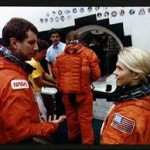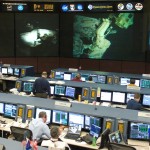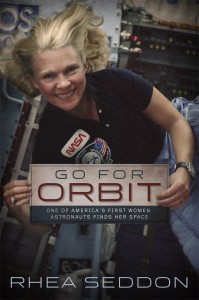Devious Minds
Launch countdown was proceeding well. We tightened our seatbelts and stared upward. We had been waiting for this moment.
The engines lit, the boosters ignited, and we were on our way up, up, up!
Seconds later, an alarm.
We had a failure of one of our three fuel cells. The pilot (PLT) looked at the computer screen and called out to us and Mission Control that it was fuel cell 2. The ground controllers, the flight commander (CDR), and our flight engineer agreed, and the PLT began the malfunction procedure on her cue card.
As she worked feverishly to reroute electrical power, the Caution and Warning system panel lights flashed red, and one of the computer screens went blank. Checking other information, our CDR made the call that “GPC 4 down,” alerting everyone that a general purpose computers had quit. “We concur, Discovery.” was the calm reply from Mission Control.
Other failures plagued us; we were unsure whether we’d make it to orbit.
We waited anxiously for the call from the Fight Dynamics Officer, called FIDO. He would relay our situation to the CAPCOOM who would let us know if we would do a Transatlantic Abort Landing (Cape Canaveral to Africa in 35 minutes) or continue uphill.
“Discovery, Houston – go for orbit!”
“Roger, Houston.”
And on we went. Twenty minutes later we were safely in “orbit.” We had completed the first of our simulations for the day. Time to debrief.
What did astronauts do when they weren’t flying?
As a crew got closer to flight, more and more time was spent in simulations. There were launch, entry, and on-orbit “sims.” At first we worked with our small training team. Later the simulators were connected to Mission Control so everyone could learn to work together. The simulation team had to choreograph them and make sure the complex script was carried out correctly.
When first at NASA, I heard someone say that sounded like “Sim Soup got us bad today.” I figured that someone had mixed something together into a “soup” of problems that made up the simulation. Later I learned that it wasn’t “soup” but “sup,” as in supervisor. Sim Sup was the person who captained the team that dreamed up how to challenge the knowledge of flight crews and ground controllers to prepare for the real thing.
Based on the premise that “practice makes perfect,” the sims got progressively more difficult. Better to make a mistake in a simulation than in flight. The training was done with a spirit of learning and camaraderie. Flight crews depended on Mission Control to give them information unavailable in the Shuttle, and Mission Control had to count on the crew to follow the correct procedures to fix the problems.
Extraordinary Sim Sups could invent some of the wildest failure scenarios. Loss of one obscure component would result in multiple system failures. Could the team locate and remedy the failure? Electrical power was running low. Could the payloads decide how to share it? A crewmember could be declared sick, so crew activities had to be replanned.
While crews were always appreciative of the incredible training they received, most would agree that the Sim Sups were the wickedest people at NASA.
-Rhea
We’d love to add you to our email list. If you have not yet signed up, please do so by clicking here. Thank you!
Follow me on Twitter and Facebook!






Yet again another great article. Had no idea that all the training was going on. Great info!! So proud of you.
As none of your three missions had a female PLT, which mission was this – was this a flight which you were assigned but then the crew got changed, or was this for a post-Challenger flight that got canceled?
I did many simulations with crews other than my own and this blog was about simulations in general. Just wanted to remind my readers that the PLT wasn’t always a “he”. Happy to have you as a reader of my blog!
That’s interesting – never knew sims were not always “dedicated,” that is, that they ran sims with astronauts who collectively may not be flying together.
I was on the edge of my seat and the sim ended. What a way to increase my heartbeat doctor.
Ditto. Astronauts are amazing people.